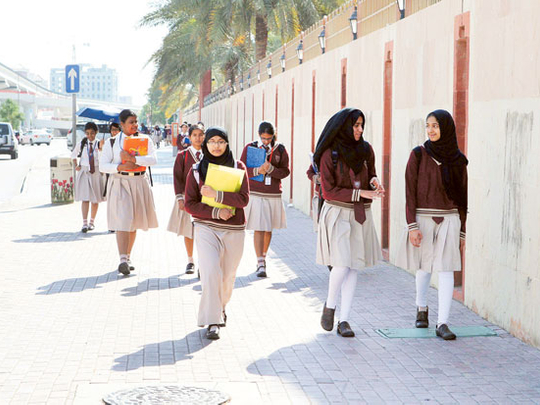
Dubai: Education has always been big business in the UAE. But with an estimated 77,000 new student positions needing to be added by 2020 in Dubai alone, educational institutions and the businesses backing them are getting quite creative in the way they use their assets — the properties housing the schools — to good use. And big investors are signing up for these lessons.
Based on projections from Colliers International, the consultancy, the value of properties operated by Dubai’s private schools’ properties was a substantial $6.1 billion in 2014, and which could increase to $7.1 billion by 2017 and $8.1 billion plus by 2020. In other words, schools and their owners are sitting on veritable gold mines. Tapping the intrinsic value of these properties is what these groups are intent on doing now.
This is why the sale-and-leaseback model is finding fertile ground in the UAE, especially in the education (and health care) sector. “Typically, real estate investments in the private education sector generate yields of 9—11 per cent, while the IRR (‘internal rate of return’ and a basic fundamental that investors go by) for education operations range between 15-23 per cent,” said Mansoor Ahmad, Director for Healthcare, Education and PPP at Colliers International, the consultancy.
“The latest trend to obtain finance is either through the sale of existing school buildings to investors on a sale-and-leaseback basis or a number of landlords/investors are willing to build schools for operators to lease on a long-term basis.
“Exploring the model is an alternative approach for established players (in the education sector) to improve returns through release of cash from non-core activities, and directing capital into core business strategies, in order to accomplish further growth.”
And new funding they need, and in substantial amounts. Within the private sector operated schools, the number of seats was at 269,000 plus last year and could grow to 315,000 seats in 2017, according to a new report on the sector by Colliers. That would swell to 360,000 by 2020.
The cost of building new schools have shot up considerably in the recent past, and so have the cash flow requirement to run a fully-fledged institution once it opens. That includes all the attendant costs — also going up — of bringing in, and retaining, skilled personnel.
Local businesses are using the public offering route to get the needed funds. Amanat recently went through a successful flotation, and plans to use 70 per cent of the proceeds to invest in health care and education, through buying stakes in companies over the next 12-24 months.
According to the Colliers’ report, ‘Banks are actively seeking investments within the education sector. However, they are limiting their investments to established players with proven track records. Investors entering the education sector with greenfield projects struggle to find project finance unless there is recourse to alternative cashflows.
“Further difficulties arise with the terms offered. Education investments are typically long term investments contradicting banks’ risk appetite which typically extends to terms between five to seven years’.
This is where specialist funds come in. Recently, the Pinebridge GCC Real Estate Fund I was set up to look at “areas of social infrastructure” such as schools and health care facilities.
“Yes, there is lot of demand for such assets across the region due to mainly two reasons, (a). The yield offered on health care and education assets is quite high, i.e., 8-10 per cent compared to 4-6 per cent on residential and commercial assets,” said Ahmad. “And unlike short-term leases for other assets, health care and education assets are leased for a minimum 20 years, significantly reducing the risk for the landlord.”











